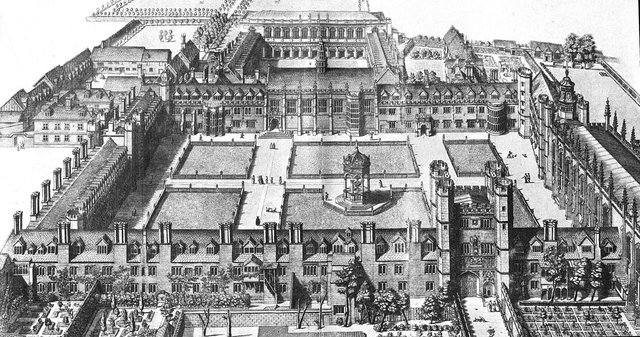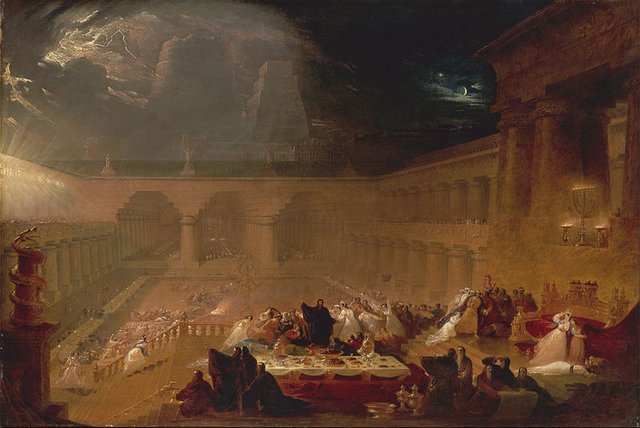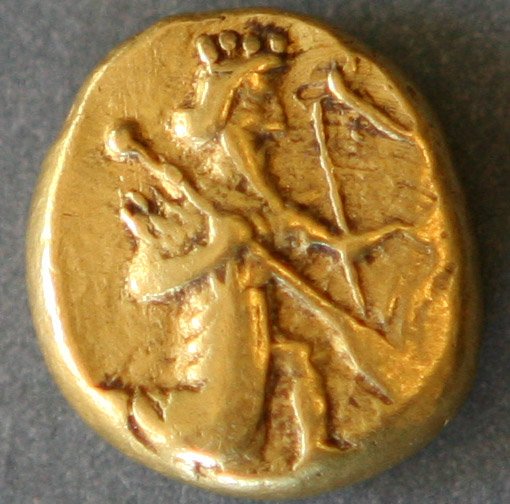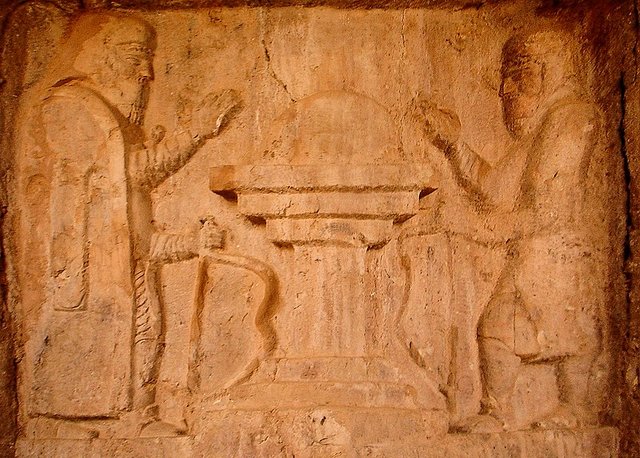
In the early 18th century, when he was still resident at Cambridge University, Isaac Newton composed a new chronology of the world, one which broke radically with the Biblical timeline that had held sway in the West for more than a millennium. He later drafted a short treatise on the subject, one that has remained largely unknown and unread to this day. The Chronology of Ancient Kingdoms Amended was published posthumously in 1728. This critique of Biblical chronology—at that time, the bedrock of Western history—is a startling anticipation of the Short Chronology, which I have been promoting on this blog for several years.
Chapter 4
The fourth chapter of the The Chronology of Ancient Kingdoms Amended is entitled Of the Two Contemporary Empires of the Babylonians and Medes. This chapter traces the history and chronology of Mesopotamia after the fall of Nineveh and the Assyrian Empire. In his Short Chronicle, which was posthumously affixed as a preface to The Chronology of Ancient Kingdoms Amended, Newton dated this event to 609 BCE, the culmination of Nabopolassar’s revolt:
625 - Nabopolassar revolts from the King of Assyria, and Reigns over Babylon. Phalantus leads the Parthenians into Italy, and builds Tarentum.
617 - Psammiticus dies. Nechaoh reigns in Egypt.
611 - Cyaxeres Reigns over the Medes.
610 - The Princes of the Scythians slain in a feast by Cyaxeres.
609 - Josiah slain. Cyaxeres and Nebuchadnezzar overthrow Nineveh, and, by sharing the Assyrian Empire, grow great. (Newton 38)
In the previous chapter, Newton told us that Nabopolassar had been the commander of the forces of Kandalanu King of Babylon, and that Nebuchadnezzar was his son (Newton 291). This part of Newton’s chronology is only one or two years out of step with the received chronology of today’s archaeologists. For example, he places the Sack of Jerusalem by Nebuchadnezzar in the year 588, one year earlier than the currently accepted date. Again, he takes 555 as the first year of the reign of Nabonidus, one year later than the currently favoured year.

Hitherto, Newton has consistently treated the historical accounts of Classical scholars with a marked degree of skepticism. Only the Biblical Scriptures are considered worthy of complete trust: they are the yardstick by which Newton assesses secular records. It is a little surprising, therefore, to find him building his Babylonian and Medean chronology in this chapter on a foundation provided by Claudius Ptolemy: namely, Ptolemy’s Royal Canon. This king-list is included in Ptolemy’s Handy Tables, which was written as a sort of appendix to the Mathematical Syntaxis, or Almagest.
It seems that Newton is prepared to trust Ptolemy’s Canon because it is in broad agreement with the Scriptures:
All these Kings, and some others mentioned in the Canon, Reigned successively over Babylon, and this last King died in the 37th year of Jechoniah’s captivity, 2 Kings xxv. 27. and therefore Jechoniah was captivated in the 150th year of Nabonassar.
This captivity was in the eighth year of Nebuchadnezzar’s Reign, 2 Kings xxiv. 12. and eleventh of Jehoiakim’s: for the first year of Nebuchadnezzar’s Reign was the fourth of Jehoiakim’s, Jer. xxv. i. and Jehoiakim Reigned eleven years before this captivity, 2 Kings xxiii. 36. 2 Chron. xxxvi. 5, and Jechoniah three months, ending with the captivity; and the tenth year of Jechoniah’s captivity, was the eighteenth year of Nebuchadnezzar’s Reign, Jer. xxxii. 1. and the eleventh year of Zedekiah, in which Jerusalem was taken, was the nineteenth of Nebuchadnezzar, Jer. lii. 5, 12. and therefore Nebuchadnezzar began his Reign in the year of Nabonassar 142, that is, two years before the death of his father Nabopolassar, he being then made King by his father; and Jehoiakim succeeded his father Josiah in the year of Nabonassar 139; and Jerusalem was taken and the Temple burnt in the year of Nabonassar 160, about twenty years after the destruction of Nineveh. (Newton 294-295)
Newton is satisfied that the Biblical and secular chronologies can be reconciled once one accepts that the Jews and the Babylonians counted the reigns of their kings by two different methods:
As the Chaldaean Astronomers counted the Reigns of their Kings by the years of Nabonassar, beginning with the [Egyptian] month Thoth, so the Jews, as their Authors tell us, counted the Reigns of theirs by the years of Moses, beginning every year with the month Nisan: for if any King began his Reign a few days before this month began, it was reckoned to him for a whole year, and the beginning of this month was accounted the beginning of the second year of his Reign ... By all these characters the years of Jehoiakim, Zedekiah, and Nebuchadnezzar, seem to be sufficiently determined, and thereby the Chronology of the Jews in the Old Testament is connected with that of later times: for between the death of Solomon and the ninth year of Zedekiah wherein Nebuchadnezzar invaded Judaea, and began the Siege of Jerusalem, there were 390 years, as is manifest both by the prophesy of Ezekiel, chap. iv, and by summing up the years of the Kings of Judah; and from the ninth year of Zedekiah inclusively to the vulgar Æra of Christ, there were 590 years: and both these numbers, with half the Reign of Solomon, make up a thousand years. (Newton 296 ... 297)
Thoth was the first month of the Egyptian calendar. Strictly speaking, it was the Alexandrian astronomer Ptolemy who dated the reigns of the Babylonian kings from Thoth, not the Chaldaean astronomers.

Newton proceeds to interpret Ptolemy’s Canon in the light of the Biblical account. For the most part, his chronology is in broad agreement with that accepted by mainstream archaeology today. One notable point of difference, however, concerns Belshazzar and Nabonidus. It is generally accepted that the latter was the last King of Babylon before the Persian conquest, while the former was his son and regent. But Newton believes that Belshazzar was omitted from Ptolemy’s Canon because he and Nabonidus were one and the same person:
Nabonnedus or Nabonadius, according to the Canon, began his Reign in the year of Nabonassar 193, Reigned seventeen years, and ended his Reign in the year of Nabonassar 210, being then vanquished and Babylon taken by Cyrus.
Herodotus calls this last King of Babylon, Labynitus, and says that he was the son of a former Labynitus, and of Nitocris an eminent Queen of Babylon: by the father he seems to understand that Labynitus, who, as he tells us, was King of Babylon when the great Eclipse of the Sun predicted by Thales put an end to the five years war between the Medes and Lydians; and this was the great Nebuchadnezzar. Daniel calls the last King of Babylon, Belshazzar, and saith that Nebuchadnezzar was his father: and Josephus tells us, that the last King of Babylon was called Naboandel by the Babylonians, and Reigned seventeen years; and therefore he is the same King of Babylon with Nabonnedus or Labynitus; and this is more agreeable to sacred writ than to make Nabonnedus a stranger to the royal line: for all nations were to serve Nebuchadnezzar and his posterity, till the very time of his land should come, and many nations should serve themselves of him_, Jer. xxvii. 7. Belshazzar was born and lived in honour before the fifth year of Jeconiah’s captivity, which was the eleventh year of Nebuchadnezzar’s Reign; and therefore he was above 34 years old at the death of Evilmerodach, and so could be no other King than Nabonnedus: for Laboasserdach the grandson of Nebuchadnezzar was a child when he Reigned. (Newton 303-304)

Committed as he is to the Biblical record, Newton accepts the historicity of Darius the Mede, the shadowy figure who is said to have taken Babylon from Belshazzar:
The Kings of the Medes before Cyrus were Dejoces, Phraortes, Astyages, Cyaxeres, or Cyaxares, and Darius: the three first Reigned before the Kingdom grew great, the two last were great conquerors, and erected the Empire; for Æschylus, who flourished in the Reigns of Darius Hystaspis, and Xerxes, and died in the 76th Olympiad, introduces Darius thus complaining of those who persuaded his son Xerxes to invade Greece ...
For he that first led the Army was a Mede;
The next, who was his son, finisht the work,
For prudence directed his soul;
The third was Cyrus, a happy man, &c.The Poet here attributes the founding of the Medo-Persian Empire to the two immediate predecessors of Cyrus, the first of which was a Mede, and the second was his son: the second was Darius the Mede, the immediate predecessor of Cyrus, according to Daniel; and therefore the first was the father of Darius, that is, Achsuerus, Assuerus, Oxyares, Axeres, Prince Axeres, or Cy-Axeres, the word Cy signifying a Prince: for Daniel tells us, that Darius was the son of Achsuerus, or Ahasuerus, as the Masoretes erroneously call him, of the seed of the Medes, that is, of the seed royal: this is that Assuerus who together with Nebuchadnezzar took and destroyed Nineveh, according to Tobit: which action is by the Greeks ascribed to Cyaxeres, and by Eupolemus to Astibares, a name perhaps corruptly written for Assuerus. By this victory over the Assyrians, and subversion of their Empire seated at Nineveh, and the ensuing conquests of Armenia, Cappadocia and Persia, he began to extend the Reign of one man over all Asia; and his son Darius the Mede, by conquering the Kingdoms of Lydia and Babylon, finished the work: and the third King was Cyrus, a happy man for his great successes under and against Darius, and large and peaceable dominion in his own Reign. (Newton 307 ... 308-309)

There follows a brief discussion of the controversy surrounding Cyaxares and the royal succession of the Median Empire. Herodotus makes Cyaxares the son and successor of Phraortes and the father of Astyages, whereas Xenophon makes Cyaxares the son and successor of Astyages. This controversy persists to this day, with arguments for and against the existence of a second Median king called Cyaxares. Newton, however, was satisfied that there was only one such king, and that he reigned between Astyages and Darius the Mede:
... so then Astyages, Cyaxeres and Darius Reigned successively over the Medes; and Cyrus was the grandson of Astyages, and married the sister of Darius, and succeeded him in the Throne.
Herodotus therefore hath inverted the order of the Kings Astyages and Cyaxeres, making Cyaxeres to be the son and successor of Phraortes, and the father and predecessor of Astyages. (Newton 310)
The last King of the Medes is by Xenophon called Cyaxares, and by Herodotus, Astyages the father of Mandane: but these Kings were dead before, and Daniel lets us know that Darius was the true name of the last King. and Herodotus, that the last King was conquered by Cyrus in the manner above described; and the Darics coined by the last King testify that his name was Darius. (Newton 330)
Newton rounds off this chapter by linking the Medean chronology to that of the Persian Empire. This is summarized in the Short Chronicle:
544 - Sardes is taken by Cyrus. Darius the Mede recoins the Lydian money into Darics.
538 - Babylon is taken by Cyrus.
536 - Cyrus overcomes Darius the Mede, and translates the Empire to the Persians. The Jews return from Captivity, and found the second Temple. (Newton 40)

To be continued ...
References
- Leo Depuydt, More Valuable than All Gold: Ptolemy’s Royal Canon and Babylonian Chronology, in Piotr Michalowski (editor), Journal of Cuneiform Studies, Volume 47, American Schools of Oriental Research, (1995)
- Herodotus, A D Godley (editor & translator), Herodotus, Volume 1, The Histories, Books 1 and 2, Loeb Classical Library, Harvard University Press, Cambridge MA (1975)
- Isaac Newton, The Original of Monarchies, Unpublished (1701)
- Isaac Newton, The Chronologies of Ancient Kingdoms Amended, J Tonson, J Osborn, T Longman, London (1728)
Image Credits
- Trinity College, Cambridge (1690): David Loggan (engraver), Cantabrigia Illustrata, Cambridge (1690), Plate XXIX (cropped), Public Domain
- The Walls of Babylon (Intolerance): D W Griffith, Public Domain
- Belshazzar’s Feast (Martin): John Martin (artist), Yale Center for British Art, Public Domain
- Persian Gold Daric: Gold Daric issued by Darius the Great (c 490 BCE), Public Domain
- Tomb of Cyaxares I: Qyzqapan Tomb Relief, Sulaymaniyah, Public Domain
- Isaac Newton (1702): Geoffrey Kneller (artist), National Portrait Gallery, NPG 2881,Public Domain
